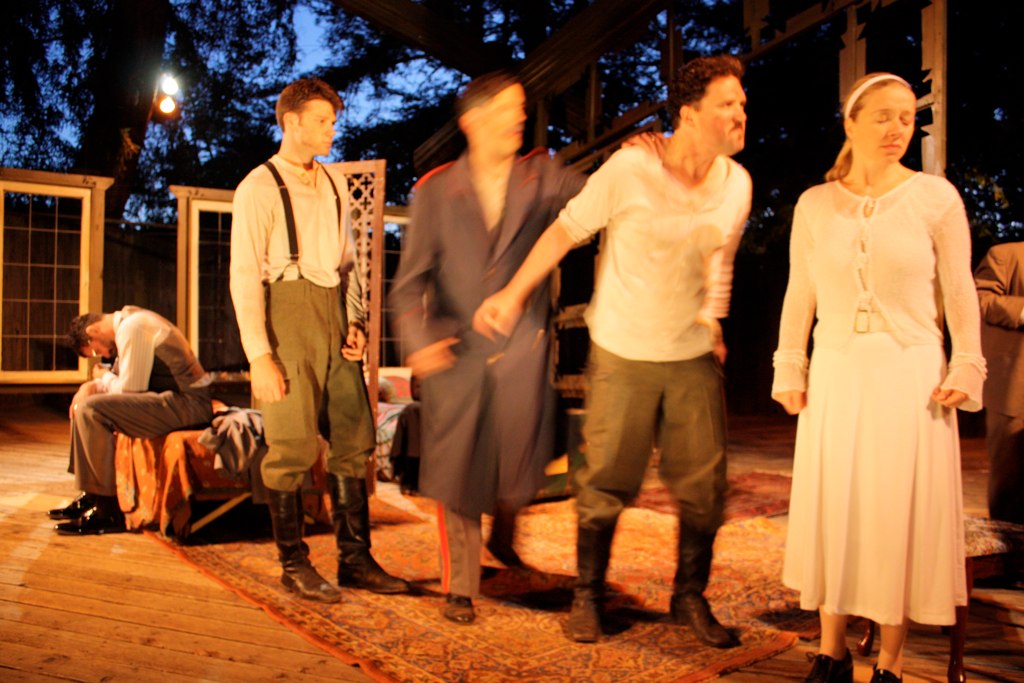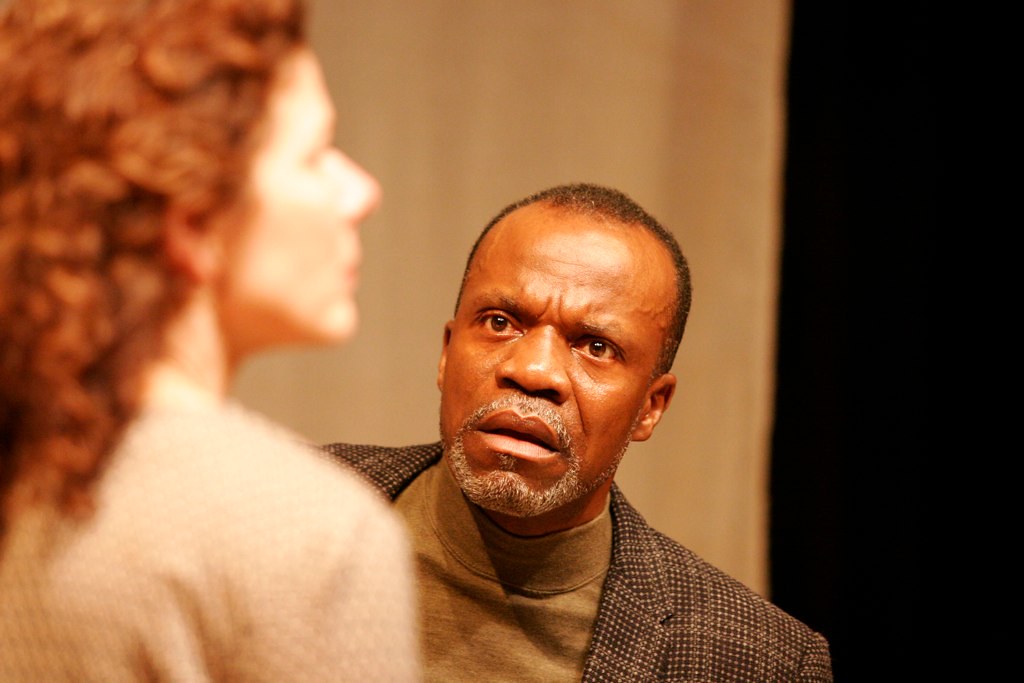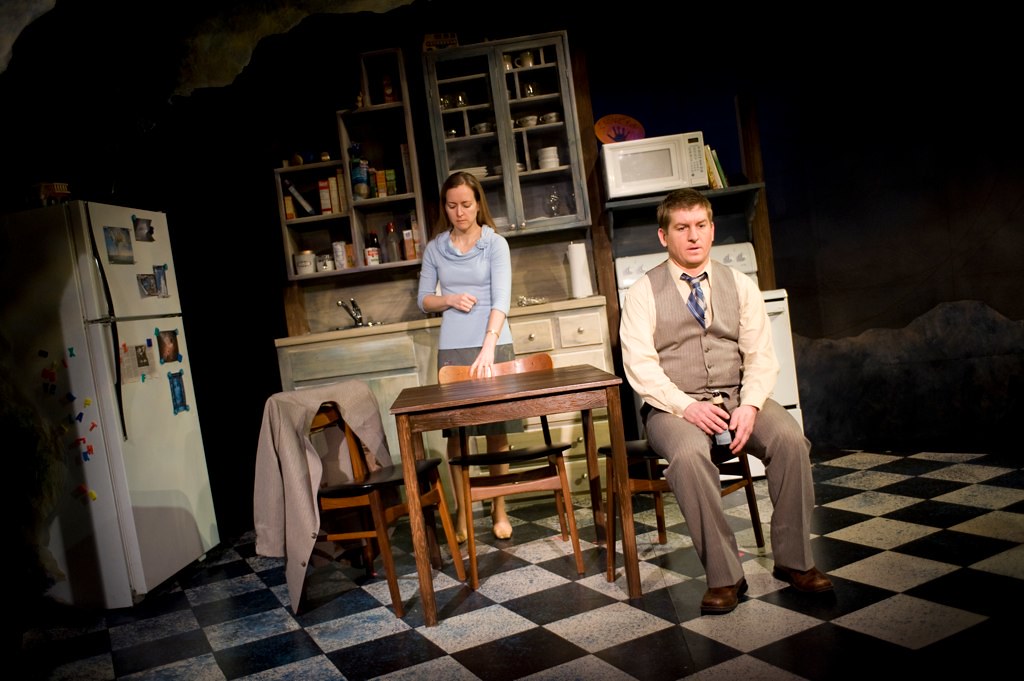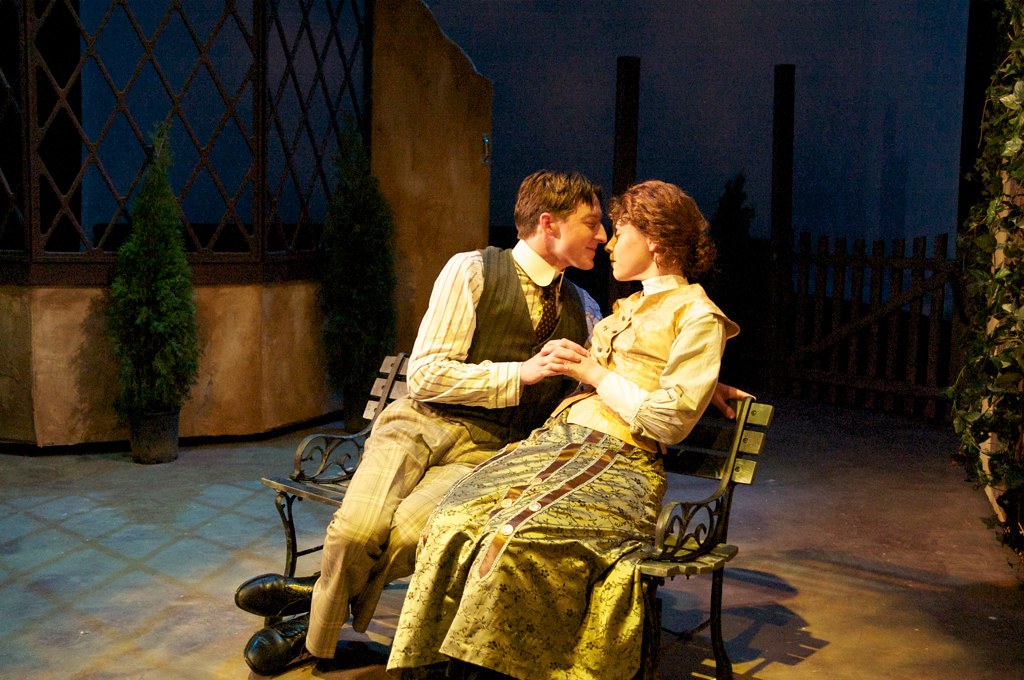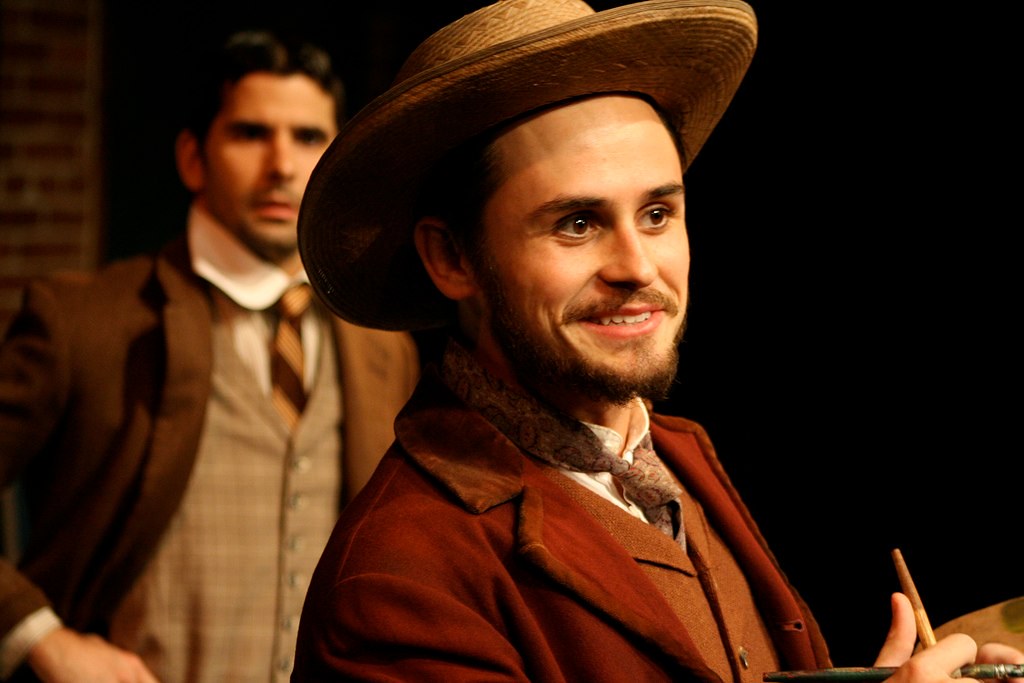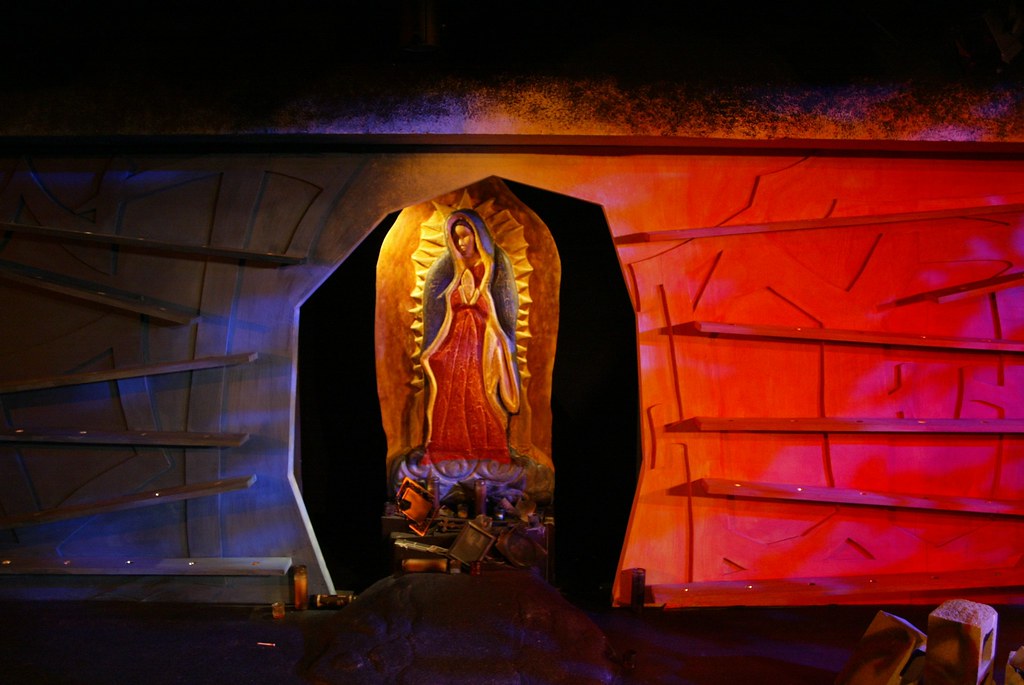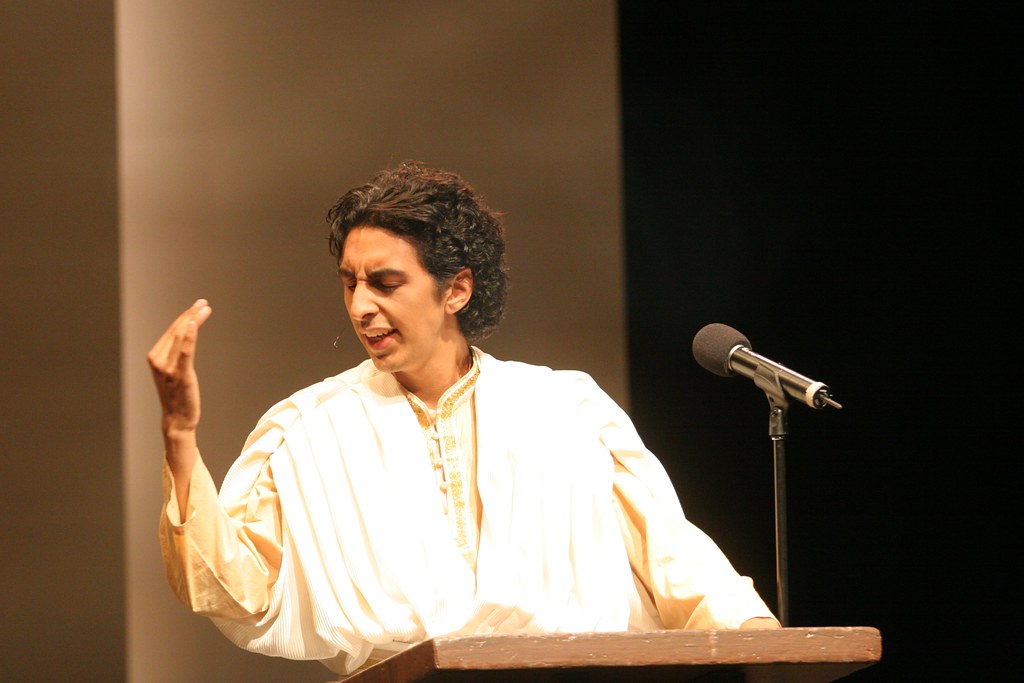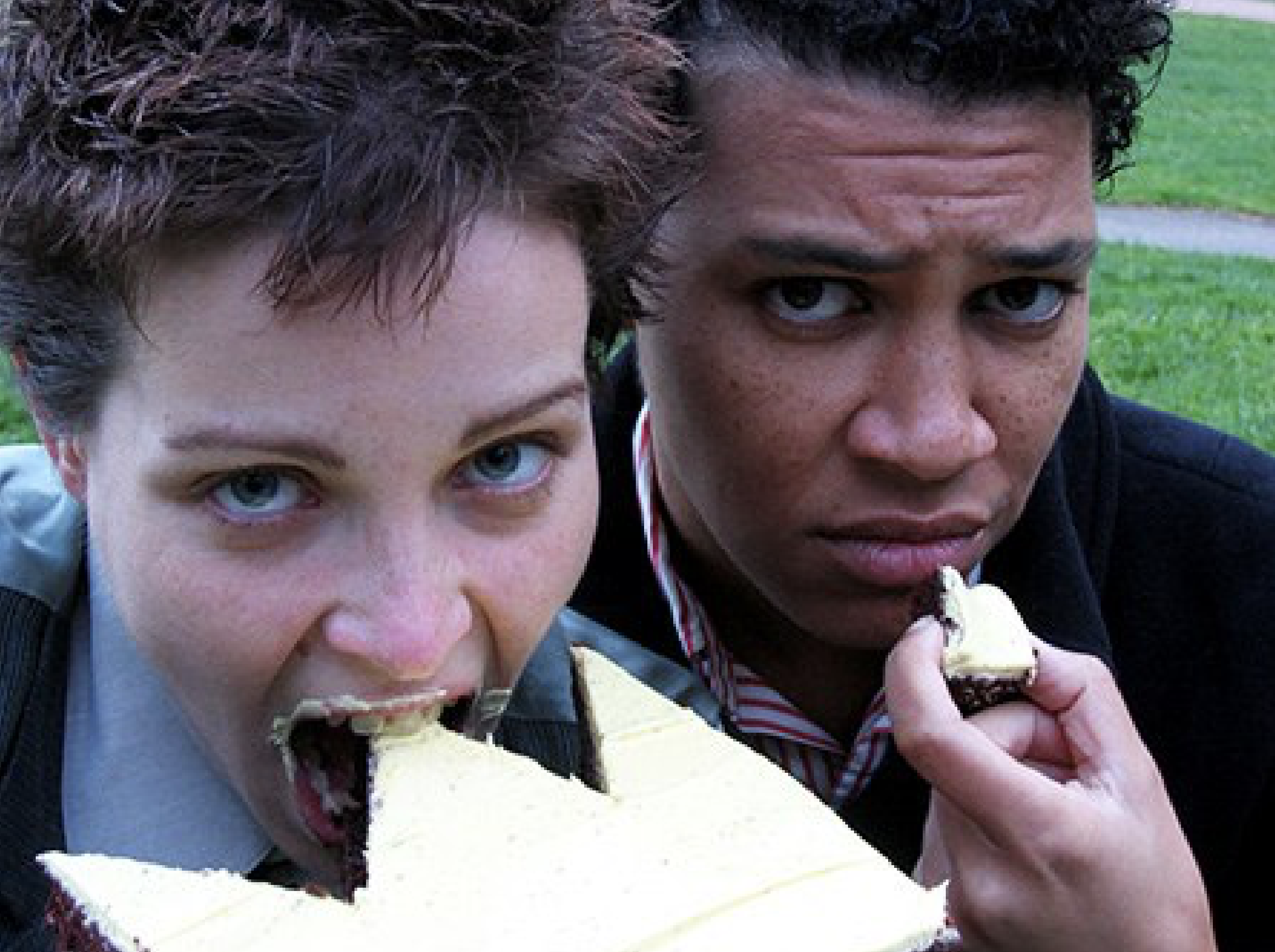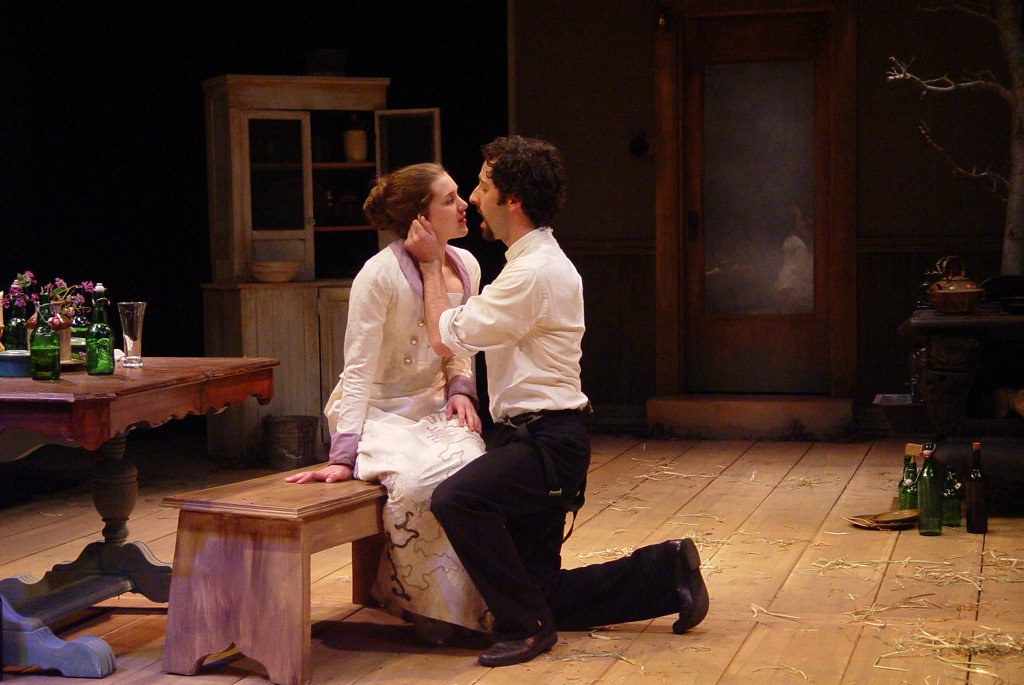Written by Anton Chekhov
Directed by Susannah Martin
Photos by Kate Micawber
Presented by Porchlight Theatre Company
June 18 – July 11, 2009
Press
MARIN INDEPENDENT JOURNAL “Leveraging an extremely clever but simple set design by Steve Decker, director Susannah Martin evokes the Russian countryside by using the hillside around the amphitheater. The duel between Tuzenbach and his former friend Solyony takes place in the distance, for example. We feel the effects of the fire in town, even though we don’t see it…Chekov’s “Three Sisters” is a finely wrought, ambitious and daunting undertaking with great appeal for fans of classic theater.” – Barry Willis
BAY AREA CRITIC’S CIRCLE “Director Susannah Martin seems well versed in Chekhov. She pays strict attention to the specific gestures of each character and demonstrates the importance of the unspoken word. Under her capable direction, all of the performances are like vignettes. Martin has put together a moving, funny and thought provoking production of Three Sisters.” – Annette Lust
Director’s Note
When Porchlight core member Jon Burnett asked me whether I could sum up the action of this play in a nutshell, I flippantly said, “Three sisters wait five years for somebody to take them to Moscow.” As blithe as this statement may seem, it does ring true. This family wants a momentous change – what they think will be a life-saving change – to simply “happen” in their lives. A shift that will not only save them from the boredom and atrophy of the small-town life they’re living but one that will also fulfill their dreams of a glorious future. All of their individual – and very different – hopes and dreams are represented in going to Moscow. But instead of taking the action necessary to make that happen, they wait… and talk about it. They stay fixed in one place. Time marches on, and they stay stuck with this dream that they don’t know how to make into a reality. So they don’t.
How do you build a “vision” around this idea? You build a world that progresses around these characters – an organic world that moves forward, lives, laughs, loves, and then ultimately, decays and dies even as the sisters (and their brother Andrey) revolve around the same fixed point. The house they live in changes, ages, and decays. As Natasha, the sister-in-law who knows how to take definitive action, takes over, the space inside the house gets smaller and smaller until ultimately, the sisters spend their last minutes at home outside – wandering – unable to enter the house. Their clothing progresses from that which belongs to a rarified world that smacks of a previous era where the upper classes could lounge around and talk about work into the practical garments of the worker. The music and sound begins in the previous era and with the trappings and accoutrements of those with money and ends with the music of the peasants – and of the military – of the party to come. Things change. Time marches on. The world moves forward even if the sisters do not.
In Chekhov, much as in life, people live, people die. They love, and laugh and flirt, and marry, and fight, and say and do awful things to one another and spout philosophy and meet their best and brightest self alongside their worst demons, all in one winter’s evening or on a fall afternoon. People aren’t polite – they interrupt each other – they don’t listen – they say and do strange things – they’re idiosyncratic and clueless and yet loving and thoughtful within the same breath. In our approach to the text, we needed to allow the rhythm of this reality to live… to travel along the path Chekhov provides without being afraid of the chaos or silences that ensue.
When I first taught a workshop to the core company members back in December of 2006, I discovered that they were a group of very experienced and professional artists but at the same time, they were people who were living their lives. They were asking the questions I was asking: how do you find the balance between living a life – having a family and being a human being – and also be an artist? How do you do art sanely? How do you express your values – your every day life values – in the work that you do? When I met the artists at Porchlight, I knew that I could ask these questions with them and that I could bring the questions into the work. Much like the environment that Porchlight performs in, it’s organic – it’s an intrinsic part of who they are and how they create theatre. And thus, it is an ideal environment for me to work in – and an exemplary place for Chekhov.
Cast
Solyony / Michael Barr*
Masha / Tara Blau*
Anfisa / Candace Brown
Andrey / Jon Burnett*
Natasha / Rebecca Castelli*
Irina / Thais Harris
Olga / Julia McNeal*
Chebutykin / John Mercer
Tuzenbach / Craig Neibaur
Kulygin / Ryan O’Donnell
Rohde / Jarrod Quon
Verskinin / Nick Sholley*
Fedotik / Lowell Weller
Ferapont / Don Wood
*Member of AEA
Crew
Artistic Director Emeritus / Molly Noble
Assistant Stage Manager / Dave Abrams
Costume Design / Rebecca Redmond
Production Manager / JP Hitesman
Properties + Set Dressing / Mia Baxter + Seren Helday
Set + Lighting Design / Steve Decker
Sound Design / Susannah Martin, Jarrod Quon, + Lowell Weller
Stage Manager / Jennifer Stukey
